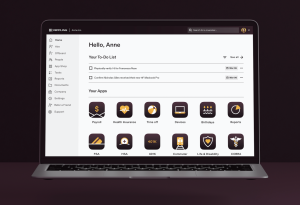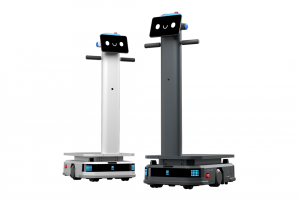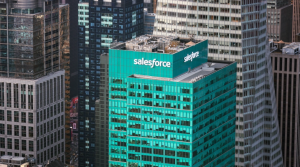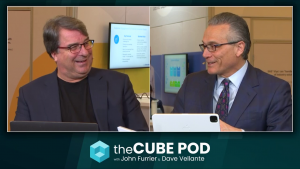Localytics going beyond metrics to affect buyer behavior | #HPBigData2014
![]() Real time analytics is what sets Char Software, Inc.’s Localytics apart from other business intelligence services, and now the metrics-providing startup is looking to spark more action around its insight. During his interview with SiliconANGLE’s roving news desk theCUBE at Hewlett-Packard Co.’s HP Vertica conference, Localytics co-founder and chief software officer details his goals during these later stages of funding for his startup. Rollins also talks about Big Data, mobile, and web analytics and the phenomenon of the DevOps revolution.
Real time analytics is what sets Char Software, Inc.’s Localytics apart from other business intelligence services, and now the metrics-providing startup is looking to spark more action around its insight. During his interview with SiliconANGLE’s roving news desk theCUBE at Hewlett-Packard Co.’s HP Vertica conference, Localytics co-founder and chief software officer details his goals during these later stages of funding for his startup. Rollins also talks about Big Data, mobile, and web analytics and the phenomenon of the DevOps revolution.
In his first question for Rollins, Furrier asked “how do you make all this work seamlessly, creating value for your customers?” Rollins explained that Localytics measures how user behavior suggests ways users could interact with those apps — like in-app messages or push notifications. Their goal is to go beyond measuring data — they want to “do something valuable with that data.”
The Localytics scope goes further than the mobile app. Rollins mentioned “When you look at the ecosystem as a whole, you want to do that not just on one device. You want to do that across all devices, all touch points with your user, whether that means mobile app, desktop, website, or a point of sale system.” The goal, he says, is to bring it all together: “Forget app as a silo. Forget website as a silo.” Rollins calls it “getting the whole feedback loop –” the Localytics goal is not just to measure what’s going on, but to affect it.
The difference between retail and media clients
By collecting data about how users encounter an app, and how users behave within said app, Localytics can identify groups of users that behave in certain ways. Then, they can help retailers send targeted messages suggesting users take action. For example, a retailer that uses Localytics could target users who have abandoned their shopping cart and send them a reminder that they have items waiting to be purchased. Rollins added that a media app, on the other hand, requires different forms of measurement. Engagement is more important, so Localytics would measure how long a user spends in an app and what they spend their time looking at.
Responding to Furrier’s question about their customer profile, Rollins said that Localytics engages “mostly with larger applications, so many of the top 100 apps on iPhone and Android.” Their customers include eBay, Microsoft, and Soundcloud. They’re looking for publishers of “long term apps.”
Localytics tech tools & innovations
Likening Localytics’ approach to the Internet of Things’ ability to connect more objects, Furrier asked, “If everything’s connected, if the experience of the user is more than just an app or a web app or a website, there’s a connected view of this ‘full stack.’ What are you guys doing to make this DevOps full stack startup work?”
Rollins replied that they make this all come together by offering businesses “one view of the customer that’s cross-medium, across all their devices.” They deliver that view using what Rollins describes as “the latest and greatest tech out there. Vertica is one of the things that we use. […] We’re running in the cloud. We’re running on AWS.”
Rollins describes their main innovation as “real time interaction with the customer, on the fly, creating that feedback loop.” Localytics is unique right now in that they’re “one of the only closed loops solutions out there,” meaning that Localytics clients can “do both [their] analytics and all of [their] push notifications, measure the results of that, see all [their] acquisition channels in one place. [Clients] get a full centric view […] across any application.”
Localytics, Rollins said, has a tech differentiator that makes their product different from others. He explains that they don’t “throw a bunch of data in Hadoop” and then batch process it. This means that Localytics offers real-time processing and interaction, including messaging and notification, sometimes within a minute of a user action. Rollins mentioned that while Localytics uses a lot if different technology. He called out Vertica in particular because it’s “great for pulling in the incoming data […] and producing fast, ad-hoc results.”
The DevOps revolution
Furrier pulled in a question from theCUBE crowd chat, querying: “Do you follow a DevOps practice inside your company, and what does it look like when it comes to automation, deployment, delivery and so on?”
Enthusiastically, Rollins replied that they are “heavily into the DevOps mentality.” He mentioned specifically that “there’s this movement now to make severs very ephemeral, very elastic, so you can up-and-down everything as you go. It’s almost like every company is building their own Heroku. And that’s the practice we follow as well. All of our developers do not have to think about the infrastructure — they’re just writing apps and they deploy them.” Their infrastructure layer is Heroku-like in behavior, with different queuing layers, service discovery, and selling on a packaging mechanism.
Next, Furrier asked for Rollins to address the “DevOps revolution,” specifically from the perspective of talent — the differences between a born-on-the-cloud developer and a developer who was educated before the cloud. Rollins replied by saying that “DevOps is a loaded term because sometimes people hear ‘ops’ and sometimes people hear ‘dev.’ You don’t want to get pigeonholed into one or the other.” What it boils down to, Rollins said, is being considered an excellent engineer, “Because the fundamental culture is managed through code, not through manual process.” As an engineer, he stressed, “You want to say that you both get what it means to manage infrastructure at scale, but you also know how to make reliable code that scales as well.”
Looking forward for the cloud
To draw the interview to a close, Furrier requested that Rollins share his outlook for the cloud. “Containerization is a big thing,” Rollins responded, “ephemeral, immutable servers are a big thing. Being able to stand up infrastructure very quickly.”
A message from John Furrier, co-founder of SiliconANGLE:
Your vote of support is important to us and it helps us keep the content FREE.
One click below supports our mission to provide free, deep, and relevant content.
Join our community on YouTube
Join the community that includes more than 15,000 #CubeAlumni experts, including Amazon.com CEO Andy Jassy, Dell Technologies founder and CEO Michael Dell, Intel CEO Pat Gelsinger, and many more luminaries and experts.
THANK YOU













